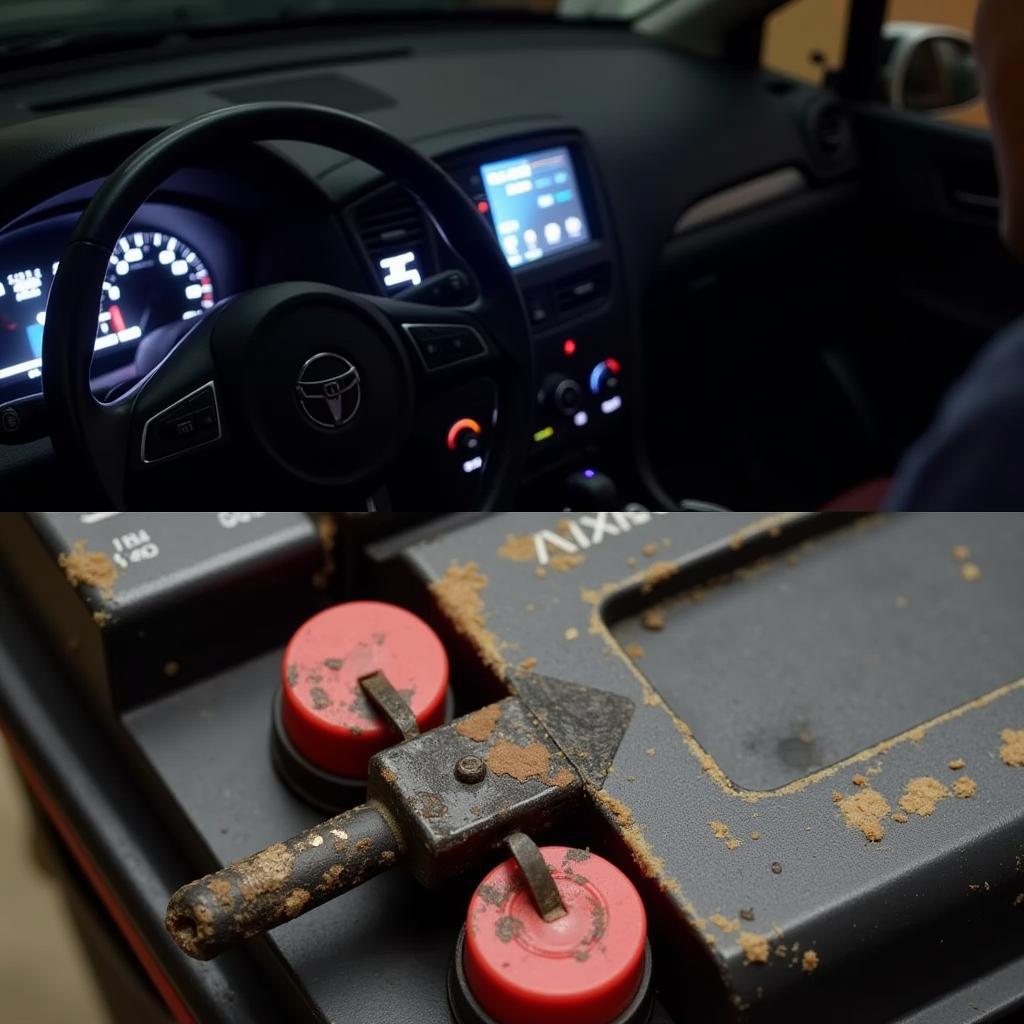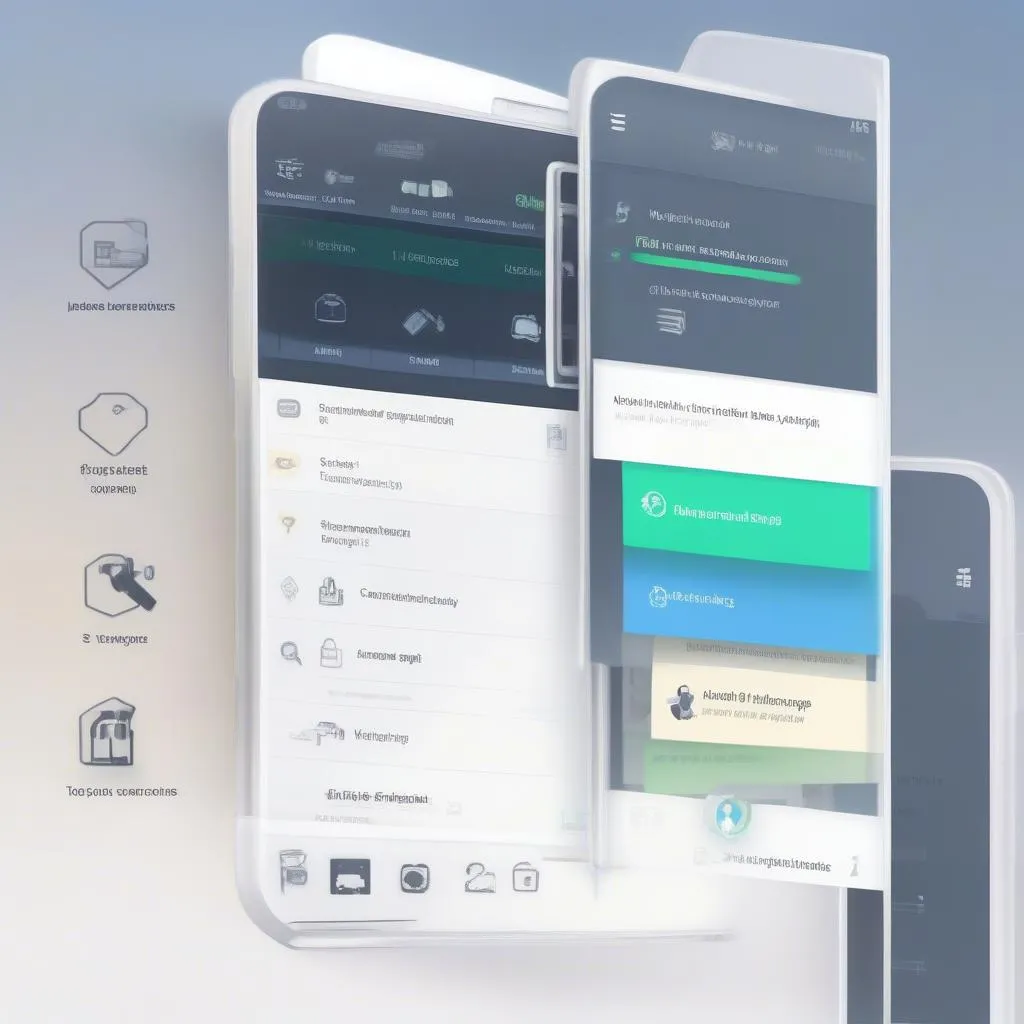Dealing with a fully discharged car battery can be a frustrating experience. This guide provides a step-by-step approach to charging a fully discharged car battery, covering everything from safety precautions to troubleshooting common issues. We’ll delve into the best practices and provide expert insights to get your car back on the road quickly.
 A completely dead car battery with corrosion on the terminals.
A completely dead car battery with corrosion on the terminals.
Understanding the Challenge of a Fully Discharged Car Battery
A fully discharged car battery, often referred to as a “dead battery,” can be caused by several factors, including leaving lights on, extreme temperatures, or simply an old battery reaching the end of its lifespan. Understanding why your battery is discharged can help prevent future occurrences. Sometimes, a dead car battery can be revived with a jump start, but what if your jump start isn’t working and you hear a clicking sound? If you have been in a similar situation before, you can check out this article on jump start not working clicking.
Safety First When Charging a Fully Discharged Battery
Safety should always be your top priority. Before you begin the charging process, ensure you are wearing appropriate safety gear like gloves and eye protection. Work in a well-ventilated area to avoid inhaling any potentially harmful fumes. Always disconnect the negative cable first and then the positive cable before connecting the charger. If you charged your car battery and now it won’t start, it might indicate a different underlying problem that needs to be addressed.
How to Charge a Fully Discharged Car Battery
Charging a fully discharged car battery requires a methodical approach. Here’s a detailed step-by-step guide:
- Gather Your Supplies: You will need a battery charger, safety glasses, and gloves.
- Prepare the Battery: Clean any corrosion from the battery terminals using a wire brush and a baking soda solution.
- Connect the Charger: Connect the positive (red) clamp to the positive terminal and the negative (black) clamp to the negative terminal.
- Set the Charger: Select the appropriate charging rate. Slow charging is generally recommended for fully discharged batteries.
- Monitor the Charging Process: Check the charger periodically to ensure it’s functioning correctly.
- Disconnect the Charger: Once the battery is fully charged, disconnect the charger in reverse order, starting with the negative clamp.
Having a dead car battery can be a real inconvenience. If you’d like to know more about the signs of a dead battery, check out this helpful resource on signs of a dead battery in my car.
Choosing the Right Battery Charger
Not all battery chargers are created equal. Select a charger specifically designed for car batteries and consider features like automatic shut-off and multiple charging rates. This helps prevent overcharging, which can damage the battery.
“When choosing a charger, prioritize quality and features like automatic shut-off to protect your battery and ensure optimal performance,” advises John Smith, Lead Automotive Electrical Engineer at AutoTech Solutions.
Troubleshooting Common Charging Problems
Sometimes, even with the right approach, you may encounter problems. If the battery isn’t accepting a charge, it might be a sign of a bad battery that needs replacement. It’s crucial to diagnose the problem accurately to avoid unnecessary expenses. Another potential culprit behind a dead battery is simply not using it for an extended period. Learn more about whether a new car battery will die if not used.
“A fully discharged battery doesn’t always mean the battery is bad. Sometimes, it simply needs a proper charge,” states Jane Doe, Senior Automotive Technician at CarCare Experts.
Conclusion
Charging a fully discharged car battery requires careful attention to safety and the correct procedures. By following the steps outlined in this guide and understanding the troubleshooting tips, you can effectively revive your dead battery and get back on the road. Remember, a fully discharged car battery is a solvable problem, not a reason to panic.
FAQs
- How long does it take to charge a fully discharged car battery? The charging time varies depending on the battery size and charger type, typically ranging from a few hours to overnight.
- Can I jump-start a fully discharged battery? Yes, you can jump-start a fully discharged battery, but it’s always recommended to charge it fully afterward.
- How can I prevent my car battery from discharging completely? Regularly check your battery’s health, ensure all lights are off when parked, and limit short trips that don’t allow the battery to fully recharge.
- What are the signs of a bad car battery? Slow engine cranking, dim headlights, and clicking sounds when starting are common signs of a failing battery. You can also find more information on this topic through our guide on dead car battery.
- How often should I replace my car battery? Car batteries typically last between 3 to 5 years, but various factors can influence their lifespan.
- What should I do if my car battery keeps dying? If your car battery keeps dying, it’s essential to have your car’s electrical system checked by a qualified mechanic to identify the underlying cause.
- Is it safe to charge a car battery indoors? Charging a car battery indoors is generally discouraged due to the potential release of flammable gases. It’s best to charge it in a well-ventilated area.

